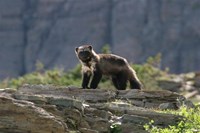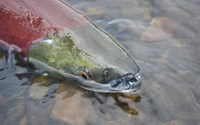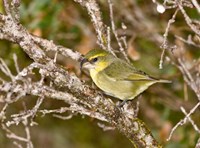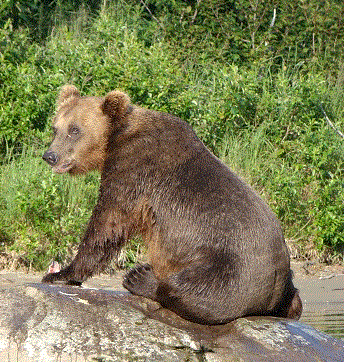- Lesson Plan (16)
- Distance Learning (1)
- Field Trips (1)
- Haleakalā National Park (2)
- Hawaiʻi Volcanoes National Park (2)
- Lake Clark National Park & Preserve (2)
- Agate Fossil Beds National Monument (1)
- Cape Lookout National Seashore (1)
- Craters Of The Moon National Monument & Preserve (1)
- Glacier National Park (1)
- Guadalupe Mountains National Park (1)
- Hagerman Fossil Beds National Monument (1)
- Show More ...
- Science (13)
- Social Studies (11)
- Literacy and Language Arts (7)
- Math (6)
Showing 18 results for Evolution ...
Horse Genetics and Evolution: Shackleford Horses Unit
- Type: Lesson Plan
- Grade Levels: Middle School: Sixth Grade through Eighth Grade

This lesson plan will cover 6th-8th grade genetics and evolution relating everything back to the horses on Shackleford Banks, NC. The students will be able to construct arguments based on evidence that organisms and landforms change over time and recognize patterns of heredity from Punnett Squares and Pedigree Analysis.
Freeing the Elwha (Salmonid Natural History)
LESSON 3 - CREOLIZATION: THE CREATION OF CULTURE
- Type: Lesson Plan
- Grade Levels: High School: Ninth Grade through Twelfth Grade
The lesson examines the process of cultural mixing and evolution through the lens of creolization.
Geology Lesson 3. Where did the oceans go?
- Type: Lesson Plan
- Grade Levels: Upper Elementary: Third Grade through Fifth Grade
Wolverines and Climate Change
- Type: Lesson Plan
- Grade Levels: Upper Elementary: Third Grade through Fifth Grade

Students will demonstrate an understanding of specific adaptations that have prepared the pika and wolverine to survive in cool climates with harsh winter conditions. Students will additionally demonstrate an understanding of timescales and evolution, and how due to the increased speed of global temperature rise, climate change can have negative effects on these mammals despite their ability to adapt.
No Dinosaurs Here, Only Mammals!
- Type: Distance Learning
- Grade Levels: Upper Elementary: Third Grade through Fifth Grade

Join an Education Ranger as they introduce students to several species of mammals that once roamed the Nebraska plains during the Miocene epoch some 26-15 Million Years ago. Learn about how climate change, geology and other environmental factors contributed to the evolution and extinction of these species. And some other fun facts as well!
Secrets of The 'Apapane - Kindergarten
Dressing for Winter
Life Time Line
- Type: Lesson Plan
- Grade Levels: Upper Elementary: Third Grade through Fifth Grade

Students will be able to visualize the times of important evolutionary events in relation to geological and cultural history. Students will be able to name some of the animals that became extinct at Craters of the Moon. Students will use their imaginations to forecast future events and designate them on a timeline.
Maui's Hawaiian Honeycreepers and Adaptive Radiation
Brown Bear Survival Game
- Type: Lesson Plan
- Grade Levels: Middle School: Sixth Grade through Eighth Grade
Can You Identify Me?
- Type: Lesson Plan
- Grade Levels: High School: Ninth Grade through Twelfth Grade

Students will have the opportunity to study and identify fish as really wildlife biologists. They will watch clips taken of salmon swimming up stream through the Silver Salmon Weir in Lake Clark National Park. Their job will be to use their identification cards and see how many salmon they can identify as they swim past. Be careful -- some salmon look awfully similar!
Farm to Factory Production: Making a Grilled Cheese Sandwich
- Type: Lesson Plan
- Grade Levels: Upper Elementary: Third Grade through Fifth Grade
Students will compare making a sandwich on a farm before the Industrial Revolution and today to understand the changes that have occurred over the last 200 years. Students should understand that 200 years ago on New England farms people had to make what they needed by hand. Many products readily available to us today were not available back then.
Fossil Teeth: Changing Climates and Evolutionary Responses Preserved in the Fossil Record (Lesson Plan by Geoscientist-in-the-Park Gina Roberti)
- Type: Lesson Plan
- Grade Levels: High School: Ninth Grade through Twelfth Grade

Students will look at changes in tooth size and shape (morphology) in the fossil record of herbivorous mammals in North America using data from a recent paleontological study. Students will infer factors which caused the observed evolutionary adaptions and link biological adaptation with global climate change and localized habitat change.










